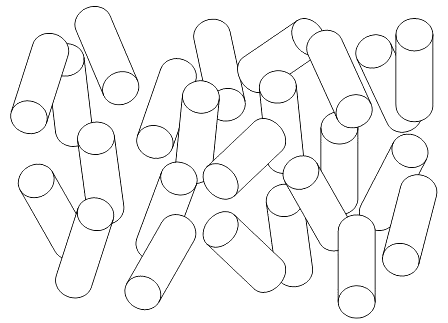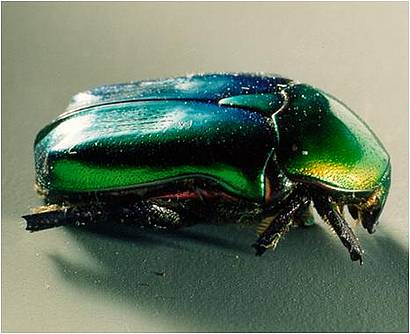Self-organizing surface structures
Orientation ordered polymers
This research project seeks ways to come up to mechanically optimized materials with polymeric materials by introducing a spontaneous orientation order.
Long chains of polymer materials become entangled themselves. The liquid and the glass state such materials are characterized by a short-range order of position and orientation of the chain segments. Transitioning to a crystalline or partly crystalline phase a position long-range order of chain segments establishes and with it an orientation order. This can be far-reaching and can then be described as a long-range order.
Low molecular systems with a suitable molecular form (e.g. rigid sticks or slices) show between the isotropic and the crystalline, the “liquid-crystalline” phases which are independent thermodynamically stable (mesophase). In these cases no or only limited position longe-range order exists (like in usual liquids), but instead a spontaneous orientation longe-range order exists (like in usual crystals).
These combined characteristics of liquid and crystalline order characteristics low-molecular liquid crystals have useful material characteristics, among others optical and dielectric anisotropy, which are the basis for LCD (displays).
An obvious question is whether polymeric materials can be synthesized, which can spontaneously create long-ranger order, combining the special properties of liquid crystals with those of polymers. However the formation of an orientational order of chain segments is limited due to the fixation on or in the polymer main chain. Therefore the realization of polymeric liquid crystals succeeded much later than that of low molecular weight. Shape anisotropic, fixed structural units in or at a polymeric main chain need long flexible intermediate linking units ("spacer groups") to form a longe-range orientational order.
Liquid crystalline main-chain polymers have found their technical application as high-strength materials approx. 30 years ago. An example of this is the aramid fiber Kevlar, which can be woven to extremely strong fabrics, such as sails for yachts or also as reinforcing component in composites analogous to fiber-reinforced plastics. Such materials have because of their orientation order a low thermal expansion coefficient and are therefore advantageous for the simple manufacturing of complex and high-strength light weight constructions.
The prototype nature shows numerous examples of high-strength biopolymer „components“. This includes the elytra of the Flower chafer and mussel and lobster shells. The latter have a distinct hierarchical microstructure: The biopolymer chains combine to bundles building the lowest hierarchical level of the molecular organization, which are arranged to unidirectional layers. Stacking such layers results in the highest hierarchical level to the resistive lobster shell. A special feature lies hidden in the type of the stacking: The preferred direction of the fiber bundles is twisted from layer to layer, so that there is a plywood-like structure, which is highly rigid, tough and yet light.
Inspired by natural models technical materials shall be improved in their mechanical behavior by introducing orientational longe-range order.




